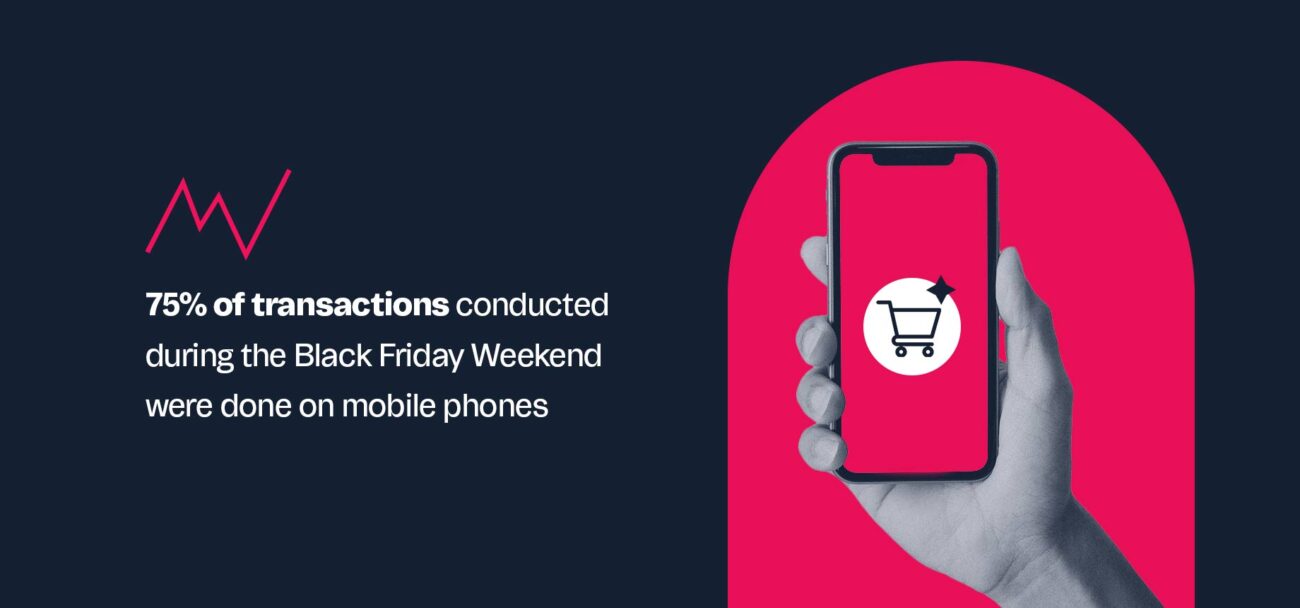
Black Friday has been the most anticipated sales day of the year in the US for decades now. With at least 60 years of history, the retail holiday used to invoke images of stampedes and fights amongst buyers eager to catch the latest deals in brick-and-mortar stores.
But Black Friday has evolved greatly in the last few years, in part because of its globalization and in part because of its growth in the ecommerce sector, specifically through Cyber Monday. This evolution doesn’t mean that consumers are safe from having a bad Black Friday shopping experience, but today it’s easier for retailers to plan ahead. How? Well…
The very first piece of data that should be considered when planning for BFCM is what went wrong and what went right in past years. Every company is different, but customer feedback should make it clear if a company needs to refine its logistics or if it should focus on having better customer service.
But focusing on the issues is only part of the deal. Retailers and ecommerce teams need to understand the parts of the process that went right and know why that chain of events happened. Planning that focuses only on past mistakes risks finding new mistakes in areas that were supposed to be perfect.
This data gathering process can also include specifics such as marketing campaign impact and top-selling products, in order to better tailor the buyer’s Black Friday shopping experience. Finally, there are rewards in assessing hits and misses from the competition, as well as the pricing and discounts they are offering, since that could translate into growing opportunities for the company.
Black Friday is not a single-day event anymore. We mean that in the literal way: sales usually start from Thanksgiving Day and extend up to the holiday shopping season, and are a great opportunity to attract the attention of eager buyers who are already chasing deals.
Having a constant rotation of sales can keep customers coming back to your website to shop online, and it’s also a way of pushing non-assertive buyers in the right direction: no one wants to miss out on great Black Friday deals, right?
Mapping out and scheduling offers is a must, and urgency-flash sales is one of the most effective strategic tools for increasing revenue, while also offering an exciting and different experience for the customer. This strategy can last a month if you decide it is worth it.
Mobile ecommerce penetration continues to under-promise and over-deliver. Last year, around 75% of transactions conducted during the Black Friday Weekend were done on mobile phones, and this year the number will continue to grow, with some of the traffic coming from shoppers who are in-store while browsing. This means that it’s vital to have a website that displays correctly in different screen sizes and ratios, as well as load times that aren’t too taxing on network connections.
Additionally, if a customer decides to complete their purchase on mobile, the entire checkout experience has to be a frustration-free one. Plan ahead for a seamless mobile experience to take advantage of this increased traffic. Simultaneously, make sure to keep all the plug-ins in your site updated: the latest versions guarantee fewer errors and pain points for the customer in each step of the buying journey.

An online buyer has never had more choices than they have today. The ever-growing number of vendors means it’s harder than ever to stand out from the pack. The one area guaranteed to help with that is customer service.
From the moment a customer places an order, there’s a period where they’re silently judging the retailer. Follow-up emails with their order status and an increased number of representatives in customer service is the best way of guaranteeing a frictionless experience and a happy customer, with everything that entails.
On the operational side of things, an often overlooked side of planning is making sure to have enough stock. Selling everything in stock might be a good problem to have, but if demand keeps going up, it’s also a missed opportunity to keep driving sales up. Verify top sellers from years prior in order to guarantee that the inventory will be able to keep up with the demand — and don’t allow orders to be placed for items not in stock.
Customers will be jumping from store to store looking for the best deals across the board. Small details like offering free delivery without a minimum purchase and clearly explained discounts and return policies can improve chances to close sales.
Time zones are another variable to take into consideration: a growing number of retailers are adopting an extended model of sales that turns the day after Cyber Monday into Cyber Tuesday, in order to offer an even bigger window for potential customers.
Finally: be pessimistic and prepare contingency plans for multiple unforeseen circumstances. That way, the odds of having unsatisfied customers goes down significantly.
The ecommerce ecosystem is getting more and more populated by the hour, which has made consumers increasingly demanding when it comes to buying journeys. For the most important weekend of the year, we encourage you to be prepared by taking into consideration the tips above. Overall, these will help you offer a great shopping experience, stand out in the mind of your customers and ultimately score amazing Black Friday sales.

